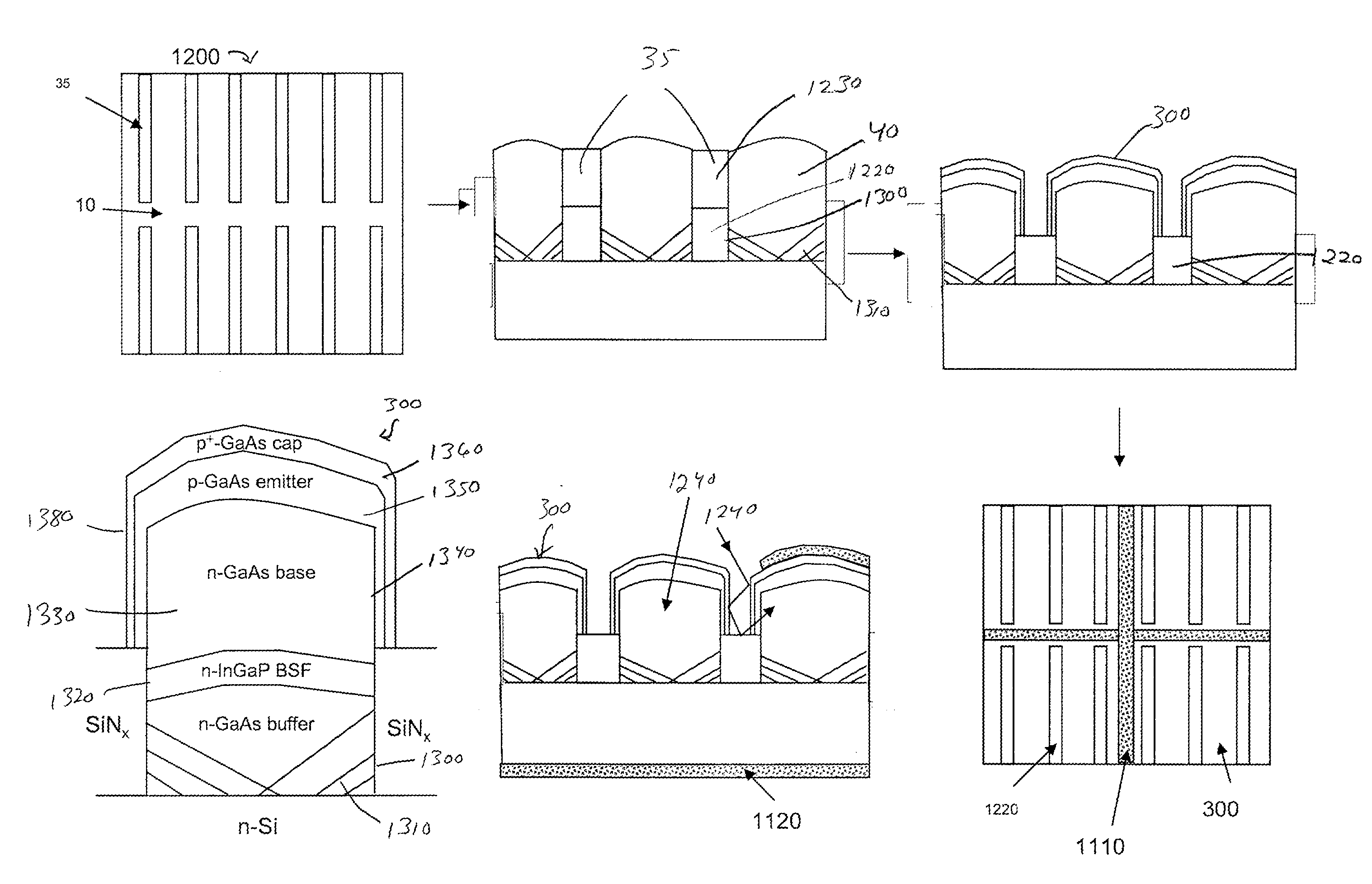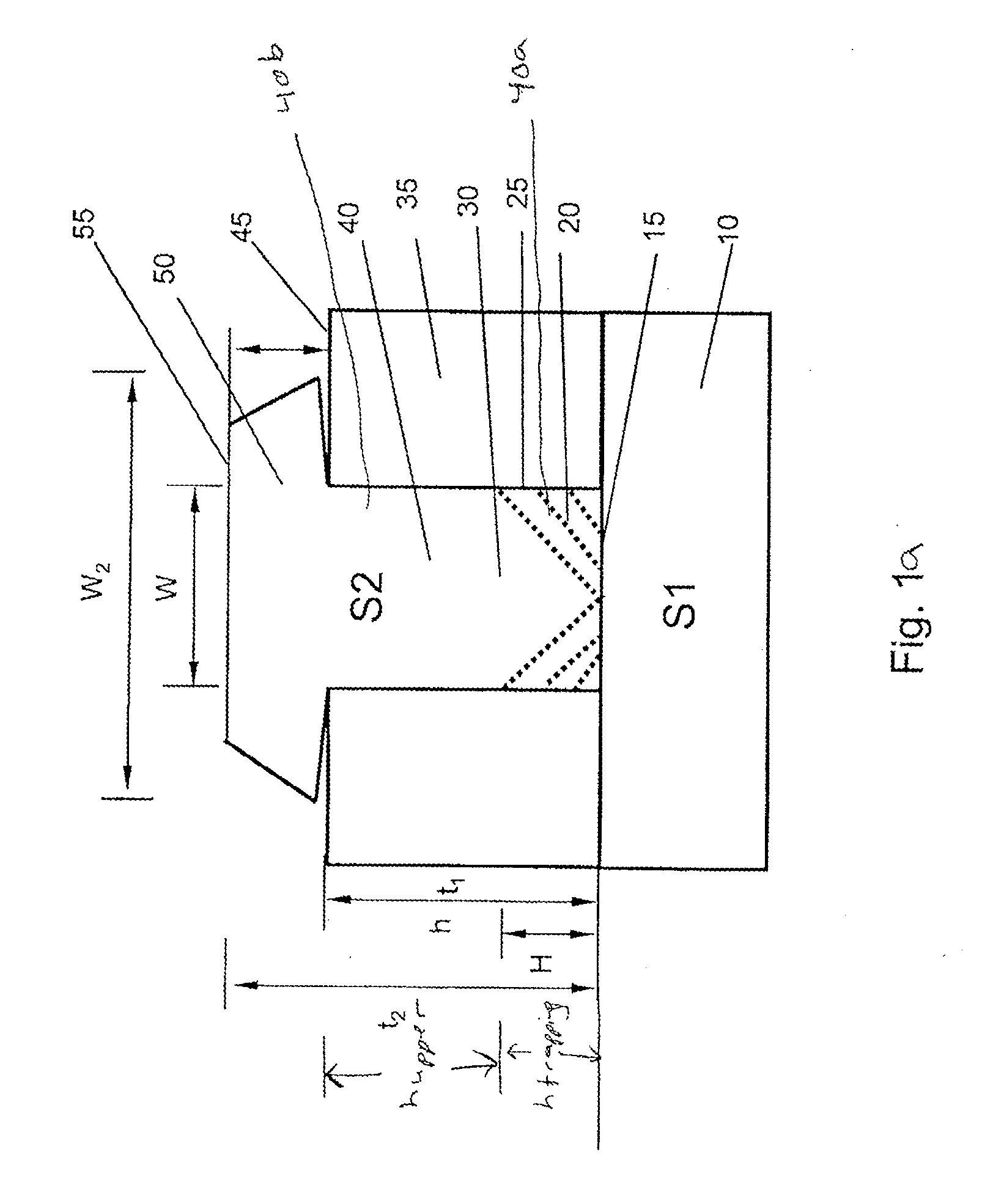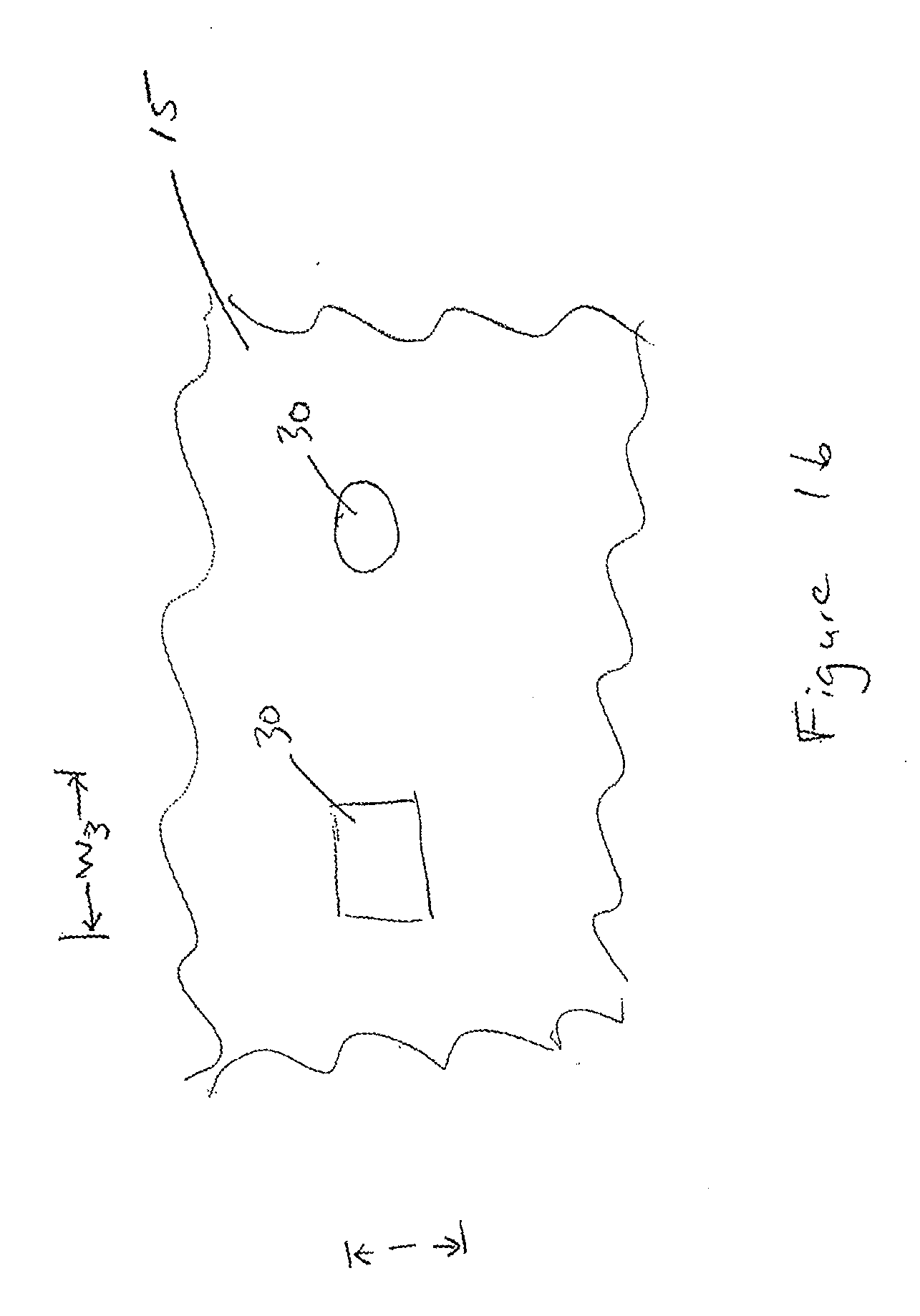Photovoltaics on silicon
- Summary
- Abstract
- Description
- Claims
- Application Information
AI Technical Summary
Benefits of technology
Problems solved by technology
Method used
Image
Examples
Embodiment Construction
[0048]A significant feature of embodiments of the present invention is the provision of a pathway to overcome the material incompatibility between lattice-mismatched materials, such as III-V compounds formed on a Si substrate. This approach is based on ART technology for selective epitaxy. See, e.g., U.S. patent application Ser. No. 11 / 436,062.
[0049]Referring to FIGS. 1a and 1b, an insulating material such as SiO2, is used to define openings, e.g., trenches, above a semiconductor substrate. Semiconductor substrate may include, e.g., silicon. The openings are configured using ART techniques so that when a lattice-mismatched material, e.g., GaAs is epitaxially grown, defects in the lattice-mismatched GaAs layer are trapped in the lower region of the trenches and the GaAs region at the top of the trenches is relatively defect free.
[0050]More specifically, a substrate 10 includes a first crystalline semiconductor material S1. The substrate 10 may be, for example, a bulk silicon wafer, a...
PUM
 Login to View More
Login to View More Abstract
Description
Claims
Application Information
 Login to View More
Login to View More - R&D
- Intellectual Property
- Life Sciences
- Materials
- Tech Scout
- Unparalleled Data Quality
- Higher Quality Content
- 60% Fewer Hallucinations
Browse by: Latest US Patents, China's latest patents, Technical Efficacy Thesaurus, Application Domain, Technology Topic, Popular Technical Reports.
© 2025 PatSnap. All rights reserved.Legal|Privacy policy|Modern Slavery Act Transparency Statement|Sitemap|About US| Contact US: help@patsnap.com



